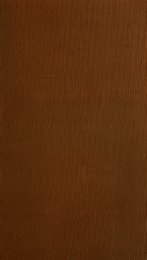Catalog of the Benthic Marine Algae of the ... - SeaweedAfrica
Catalog of the Benthic Marine Algae of the ... - SeaweedAfrica
Catalog of the Benthic Marine Algae of the ... - SeaweedAfrica
Create successful ePaper yourself
Turn your PDF publications into a flip-book with our unique Google optimized e-Paper software.
Later Starting Points in CYANOPHYCEAE<br />
The International Code <strong>of</strong> Botanical Nomenclature<br />
(ICBN; Voss et al., 1983) states that nomenclature for <strong>the</strong><br />
Nostocales begins with <strong>the</strong> monographs <strong>of</strong> Bornet and Flahault<br />
(1886-1888) and Gomont (1892-1893). (The ICBN<br />
assigns an arbitrary date <strong>of</strong> 1886 and 1892, respectively, to<br />
<strong>the</strong>se monographs.) An enormous body <strong>of</strong> taxonomic information<br />
about blue-green algae had been published before<br />
those distinguished French phycologists wrote <strong>the</strong>ir monographs.<br />
According to <strong>the</strong> ICBN, pre-starting point taxonomy<br />
may be retained, but pre-starting point nomenclature<br />
does not exist. This legalistic nonsense, ra<strong>the</strong>r than simplify<br />
<strong>the</strong> nomenclature <strong>of</strong> blue-green algae, has introduced hopeless<br />
confusion. Even those (like Drouet) who pr<strong>of</strong>ess to<br />
follow <strong>the</strong> ICBN with regard to later starting points are<br />
inconsistent. Names treated as synonyms in <strong>the</strong> starting<br />
point monographs are invalid according to <strong>the</strong> ICBN, but<br />
Drouet (1968:14) pointed out that all such names presumably<br />
have been validated subsequently "by reference or by<br />
a new description." Lacking <strong>the</strong> time to "search through<br />
thousands <strong>of</strong> local floras, check-lists <strong>of</strong> species, and morphological,<br />
ecological, and physiological papers", Drouet<br />
treated those older names "as having been validly and<br />
autonomously published, not as synonyms, but by reference<br />
to <strong>the</strong>ir original descriptions'' in <strong>the</strong> starting point monograph<br />
and subsequent publications.<br />
In view <strong>of</strong> <strong>the</strong> facts that Drouet has located <strong>the</strong> types <strong>of</strong><br />
<strong>the</strong> majority <strong>of</strong> blue-green algal species and that blue-green<br />
algal taxonomy is in an extraordinary state <strong>of</strong> flux, it seems<br />
pointless to attempt to accommodate <strong>the</strong>ir nomenclature to<br />
later starting points. Oscillatoria submembranacea is an example<br />
<strong>of</strong> <strong>the</strong> needless complications caused by <strong>the</strong> use <strong>of</strong><br />
later starting points. This species was first described by<br />
Ardissone and Strafforello (1877) as Oscillaria submembranacea.<br />
In Gomont (1892), <strong>the</strong> starting point monograph for<br />
Oscillatoria, it was treated as Phormidium submembranaceum.<br />
In accordance with normal nomenclature, this name would<br />
be written Phormidium submembranaceum (Ardissone and<br />
Strafforello) Gomont, but Article 13.1 <strong>of</strong> <strong>the</strong> ICBN renders<br />
pre-starting point nomenclature invalid, so that <strong>the</strong> name<br />
must be ascribed solely to Gomont and dated from 1892,<br />
not 1877. Drouet (1968:203) transferred <strong>the</strong> species to<br />
Oscillatoria, but incorrectly attributed it directly to Ardissone<br />
and Strafforello (considering Oscillaria and Oscillatoria<br />
as orthographic variants, an equivocal interpretation). In<br />
accordance with later starting points, it should be written<br />
Oscillatoria submembranacea (Gomont) Drouet!<br />
Nomenclatural Notes<br />
by Paul C. Silva<br />
127<br />
In <strong>the</strong> long course <strong>of</strong> compiling <strong>the</strong> Index Nominum<br />
Algarum (since 1948), I repeatedly struggled with <strong>the</strong> complications<br />
<strong>of</strong> later starting points and eventually concluded<br />
that it was impractical to continue to do so. The present<br />
catalog is my first opportunity to make <strong>the</strong> iconoclastic<br />
move <strong>of</strong> basing <strong>the</strong> nomenclature <strong>of</strong> blue-green algae uniformly<br />
on <strong>the</strong> Linnaean starting date, 1753.<br />
The Taxonomy <strong>of</strong> Acrochaetioid <strong>Algae</strong><br />
The confused taxonomy <strong>of</strong> acrochaetioid algae was thoroughly<br />
reviewed by Woelkerling (1983a), who expressed<br />
personal preference for ei<strong>the</strong>r <strong>of</strong> two classifications: a monogeneric<br />
scheme using <strong>the</strong> oldest available name, Audouinella<br />
Bory de Saint-Vincent (1823:340, "Auduinella"); or a polygeneric<br />
scheme based solely on <strong>the</strong> type <strong>of</strong> life history<br />
without regard for vegetative features. Woelkerling concluded:<br />
"In <strong>the</strong> short term, it seems to me that it is more<br />
important to accumulate detailed, trustworthy data on numerous<br />
species than to engage in endless manipulation <strong>of</strong><br />
generic schemes. Use <strong>of</strong> ei<strong>the</strong>r <strong>of</strong> <strong>the</strong> above two schemes<br />
would provide a workable taxonomic framework while new<br />
studies are being carried out."<br />
The decision as to which classification would best serve<br />
<strong>the</strong> purposes <strong>of</strong> this catalog was based on <strong>the</strong> following<br />
considerations. Papenfuss (1945), in trying to delineate <strong>the</strong><br />
South African acrochaetioid algae, concluded that it was<br />
possible to distribute <strong>the</strong>m among four genera on <strong>the</strong> basis<br />
<strong>of</strong> <strong>the</strong> number and form <strong>of</strong> <strong>the</strong> cloroplasts in each vegetative<br />
cell, as follows:<br />
Rhodochorton, few to many small, discoid chloroplasts;<br />
Acrochaetium, one parietal or laminate chloroplast;<br />
Audouinella, one or more spiral chloroplasts; and<br />
Chromastrum, one or more stellate chloroplasts.<br />
It soon became apparent that <strong>the</strong> distinction drawn by<br />
Papenfuss between Acrochaetium and Chromastrum was difficult<br />
to maintain, partly because he (and many subsequent<br />
workers) confused form with position. A chloroplast with a<br />
stellate form may be axile or parietal in position. There are<br />
intermediate situations with regard to both form and position.<br />
Feldmann (1962) proposed that Acrochaetium include<br />
plants whose cells contain a single chloroplast <strong>of</strong> ei<strong>the</strong>r form<br />
or position. Woelkerling (1971), believing that vegetative<br />
characters are <strong>of</strong> diagnostic value only at <strong>the</strong> species level,<br />
placed all acrochaetioid algae with sexual stages in one<br />
genus, Audouinella. He referred those without sexual stages<br />
to Colaconema Batters (1896:8), which he treated as a form












